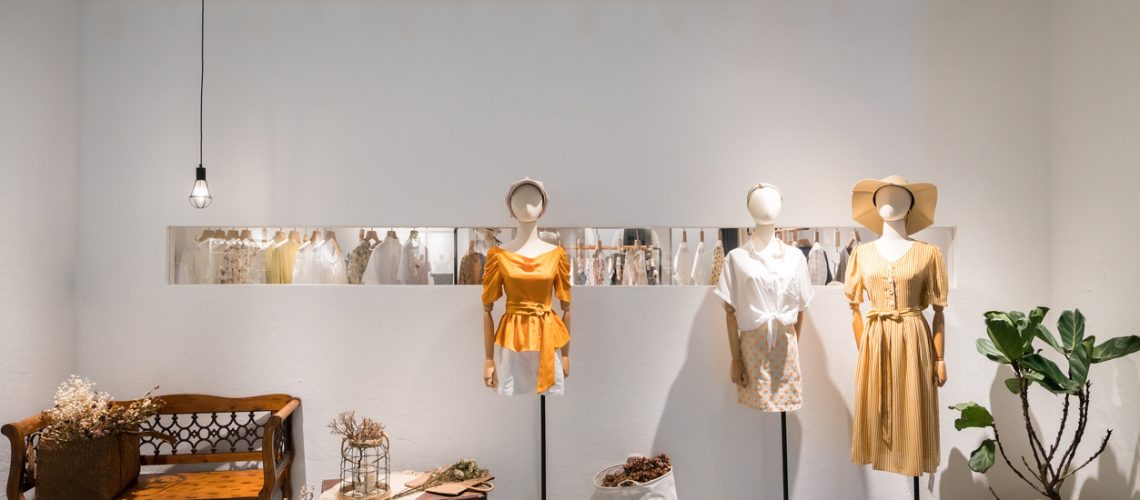Leading 10 Must-Have Pieces from Your Fave Boutique Fashion Shops
Leading 10 Must-Have Pieces from Your Fave Boutique Fashion Shops
Blog Article
Checking Out the Evolution and Influence of Garments on Modern Fashion Trends
The advancement of garments has dramatically affected modern style trends, combining historical criteria with innovative innovations. Legendary figures like Coco Chanel and Yves Saint Laurent revolutionized the fashion business by introducing principles that focus on convenience and ease of access, which proceed to reverberate today. Meanwhile, technical strides in areas such as 3D printing and wise fabrics are redefining style opportunities and consumer experiences. In addition, the growing emphasis on inclusivity and sustainability is improving market criteria. As we consider these multifaceted influences, one have to question just how these elements collectively redefine style's duty in showing and forming modern culture.
Historical Fashion Influencers
In the tapestry of style background, specific figures have left an indelible mark, shaping the fads and designs that specify whole ages. Coco Chanel, an innovative designer, redefined women's style by presenting comfy, sophisticated clothes that departed from restrictive bodices.
Elsa Schiaparelli is an additional essential figure, renowned for her avant-garde designs that included surrealist art, teaming up with Salvador Dalí to produce whimsical pieces that tested standard looks. Her cutting-edge usage of shade and strong patterns reverberates in modern style. Yves Saint Laurent, at the same time, equalized high fashion with prêt-à-porter collections, bringing runway designs to the masses and establishing a precedent for modern ready-to-wear lines.
These dreamers, to name a few, not only revolutionized style in their times however also established enduring fads that reverberate in today's fashion business, giving a foundation upon which modern designers proceed to build and introduce. Their traditions underscore the relevance of imagination and bold in vogue's ever-evolving narrative.
Technical Developments in Style
In the middle of the vibrant landscape of the fashion business, technical advancements stand at the center of development, improving how developers create and consumers engage with fashion. The combination of 3D printing has actually transformed layout processes, making it possible for designers to explore complex frameworks and lasting materials that were formerly inconceivable. This innovation promotes rapid prototyping, minimizing waste and accelerating manufacturing times.

Smart fabrics, installing modern technology into materials, are likewise changing the sector. Innovations like self-cleaning and temperature-regulating materials supply boosted functionality and comfort. Wearable innovation, integrating attributes like health and fitness tracking and communication, adds a new dimension to fashion, merging looks with usefulness.
Cultural Shifts and Design
As technical innovations remain to improve the fashion business, cultural shifts are just as influential, redefining design and customer choices. Recently, the increase of social networks systems has actually increased the circulation of international style fads, permitting varied social influences to assemble and exist together. This electronic interconnectivity has actually assisted in the fast exchange of ideas, resulting in a more comprehensive and diverse analysis of style that reflects the multifaceted nature of modern-day culture.
Cultural awareness and appreciation have motivated developers to draw inspiration from a broader range of ethnic and historic contexts, integrating traditional concepts with contemporary aesthetic appeals. This combination has caused style that resonates with a larger target market, advertising a sense of identification and belonging throughout different demographics. Additionally, the raising demand for personalization has actually driven brands to offer customizable options, making it possible for consumers to express originality while showing their social heritage.
Additionally, shifting social values have actually impacted style, with inclusivity and variety becoming main motifs. The market has actually begun to welcome models and influencers of numerous body types, ethnicities, and gender identifications, challenging standard charm criteria. This improvement underscores the power of social changes fit the future of style, as style comes to be a much more authentic expression of individual and collective over at this website identification.
Sustainability and Modern Design
While the garment industry continues to advance, the essential for sustainability has actually come to be progressively urgent, affecting modern style techniques. This shift aims to resolve honest factors to consider and environmental worries, bring about a reevaluation of conventional manufacturing approaches. Designers are now incorporating lasting materials, such as organic cotton, recycled polyester, and eco-friendly materials, right into their collections, lowering the eco-friendly footprint of style. The surge of slow-moving fashion, which emphasizes high quality over amount, urges consumers to spend in classic pieces instead of short-term trends.
In addition, modern-day layout is identified by its technology in minimizing waste and promoting circularity. Techniques such as zero-waste pattern cutting and 3D knitting are gaining grip, advice enabling designers to create garments with minimal fabric wastage. Additionally, brand names are taking on clear supply chains, making certain liability and cultivating customer depend on. This technique not only reduces environmental impact but additionally boosts the social obligation of fashion houses.

Future Trends in Fashion

Sustainability will remain to be a driving force in shaping future fashion fads. The industry is progressively taking on green materials and honest manufacturing methods, replying to an expanding consumer demand for accountable techniques. Developments such as bio-fabricated products and closed-loop recycling systems are readied to redefine how clothes is generated and eaten, decreasing ecological influence while keeping style and high quality.
Social changes, consisting of the rise of inclusivity and diversity, will likewise play a crucial duty. As society ends up being more familiar with social problems, fashion is expected to end up being a system for expression and adjustment. Developers will likely concentrate on developing collections that reflect a broader variety of experiences and identities, championing representation and availability.
Final Thought
The advancement of apparel significantly impacts modern fashion patterns, where historical influences merge with contemporary designs. Key figures like Coco Chanel and Yves Saint Laurent have redefined style, while technological innovations such as 3D printing and wise textiles expand innovative opportunities. Social changes towards inclusivity and sustainability force brands to embrace ethical methods and embrace variety. This recurring development highlights fashion's role as a mirror to social worths and technical improvement, suggesting a future rich with innovation and inclusivity.
The advancement of garments internet has significantly affected contemporary fashion fads, merging historic criteria with advanced innovations.Among the dynamic landscape of the style sector, technical innovations stand at the forefront of development, reshaping how developers produce and customers engage with style.While the fashion sector continues to evolve, the critical for sustainability has become significantly urgent, affecting contemporary layout methods. As sustainability becomes embedded in modern style, it leads the method for an extra accountable and mindful style market.
The development of garments substantially affects modern fashion fads, where historical influences combine with contemporary styles.
Report this page